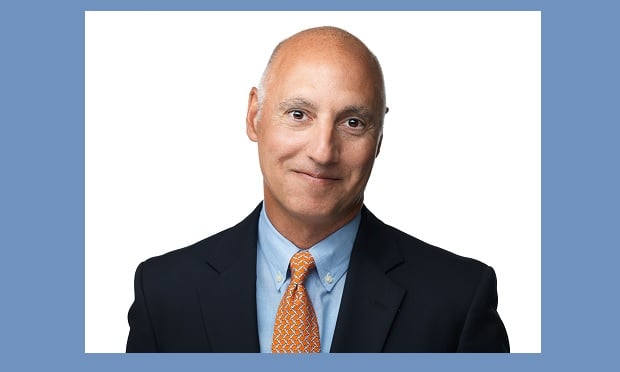Federal regulators showed they are paying attention at the statelevel even as state regulators want to be heard on theinternational level.
|Eighteen state insurance commissioners—the executive layer ofthe membership of the National Association of InsuranceCommissioners (NAIC)—plus its CEO, former Sen. Ben Nelson, met withTreasury Secretary Jacob Lew this morning with the goal of workingtogether to modernize the system of insurance regulation andgetting the states' voice heard internationally.
|Lew stressed the role of Treasury's Federal Insurance Office(FIO) in carrying out what he termed a hybrid model for insuranceregulation.
|According to a Treasury Department summary, the group discussedFIO and aspects of its recently issued Modernization Report.
|The meeting grew out of a smaller NAIC leadership meetingwith President Obama on the Patient Protection and AffordableCare Act's rollout issues, to which the state regulators addedflood insurance issues in states like Louisiana and thefrustrations with the Federal Insurance Office.
|Lew, according to a Treasury statement, said it was important tohave an insurance framework that safeguards the financial systemand Treasury's interest in identifying areas for agreement andcommon objectives.
|Florida Insurance Commissioner and NAIC past President KevinMcCarty said the meeting went “very well” and Lew was supportive ofstate-based regulation. McCarty said it was the start of a goodrelationship with Treasury.
|At the meeting, Lew supported the international role of FIO, asit is authorized by statute to coordinate federal efforts anddevelop federal policy on prudential aspects of internationalinsurance matters, including representing the United States, asappropriate, in the International Association of InsuranceSupervisors (IAIS) and assisting the secretary in negotiatingcovered agreements.
|Lew also discussed Treasury fostering “a race to the top”internationally and underscored the U.S. government's continuedfocus on higher global standards, a clear reference to the globalcapital standard handed down to global insurance supervisors by theG-20's Financial Stability Board (FSB).
|The NAIC raised the issue of a lack of state regulatorymembership on the FSB, which is handing down key policy mandates tothe IAIS and banking supervisory bodies. Treasury, along with theSEC and the Federal Reserve, are the only U.S. members of theFSB.
|The NAIC was expected to try to persuade Treasury to include thestate insurance regulators in the FSB dialogue given that mattersthat concern insurance regulation continue to percolate at thathigh level. However, this is not something Treasury can likely dounilaterally although it seemed the NAIC may expect it goingforward from its statement.
|“We are extremely pleased with the Secretary's statement ofstrong support for the state-based regulatory system. The focus ofthe meeting was on significant international developments,including the ongoing EU/U.S. dialogue and Solvency II, theinclusion of state regulators in the work of the (FSB), and effortsto develop a global capital standard,” said Louisiana InsuranceCommissioner and NAIC President Jim Donelon in a statement.
|Lew, according to the Treasury summary,emphasized that Treasury and state regulators should work togetherto modernize the system of insurance regulation and continueengagement around these issues.
|Nelson, in his press statement, said the NAIC looks forward to acontinued dialogue on issues of mutual interest with the TreasuryDepartment “that strengthens our state-based system ofregulation.”
|Captives
|Rhode Island Insurance and Banking Superintendent Joe Torti IIInoted during the Financial Condition Committee meeting thatcorporate governance of insurance companies and use of captiveinsurers were singled out in the FIO report and that the NAICintends to continue to address those issues in the coming year.
|The Treasury's Office of Financial Research (OFR), in its annualreport on threats to stability, also singled out captives withregard to major financial data gaps.
|OFR noted that state-insurance regulators, through the NAIC,have been exploring options for increasing transparency in thearea.
|“Although there are several ways to achieve this, one optioncould be to require captive insurers to submit public financialfilings,” the OFR report stated.
|Torti told NU he has always been for disclosure, andincluded such thoughts in the recommendations of the NAIC whitepaper he helped usher in. The recommendations are before thePrinciples-Based Reserving Implementation (PBR) Task Force now,which Torti chairs.
|“Disclosure is essential, but is not enough to win the day,”said New York Department of Financial Services Superintendent BenLawsky about the OFR report.
|New York is still for a moratorium on these types oftransactions, Lawsky affirmed, and a deputy noted companies canexpect greater disclosure requirements in the state in the comingyear
Want to continue reading?
Become a Free PropertyCasualty360 Digital Reader
Your access to unlimited PropertyCasualty360 content isn’t changing.
Once you are an ALM digital member, you’ll receive:
- All PropertyCasualty360.com news coverage, best practices, and in-depth analysis.
- Educational webcasts, resources from industry leaders, and informative newsletters.
- Other award-winning websites including BenefitsPRO.com and ThinkAdvisor.com.
Already have an account? Sign In
© 2024 ALM Global, LLC, All Rights Reserved. Request academic re-use from www.copyright.com. All other uses, submit a request to [email protected]. For more information visit Asset & Logo Licensing.








